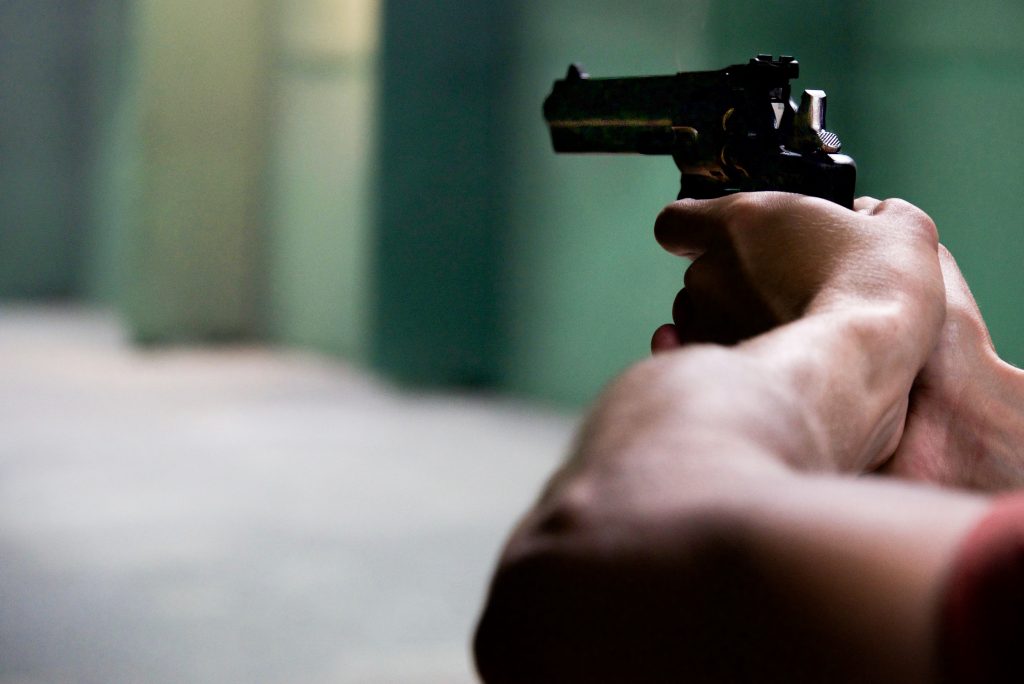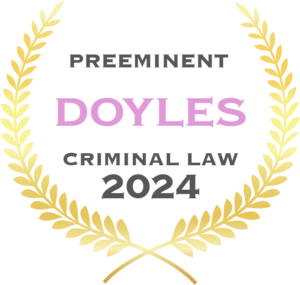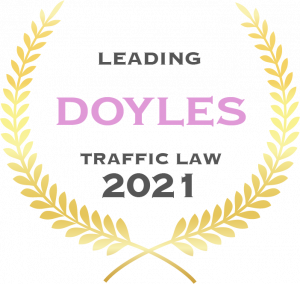The definition of an ‘imitation firearm’
The Firearms Act 1996 (NSW) regulates the use, registration and keeping of firearms in NSW.
The Act defines an imitation firearm as ‘an object that, regardless of its colour, weight or composition, or the presence or absence of any moveable parts, substantially duplicates in appearance a firearm’.
Under the Act, an imitation firearm is taken to be a prohibited firearm unless it is a children’s toy.
Are Replica Guns Illegal in Australia?
It is an offence under the Firearms Act to have unauthorised possession of an imitation or replica firearm. The offence carries a maximum penalty of 14 years imprisonment, with a standard non-parole period of 4 years. An individual can have a replica gun if they have special authorisation and the required licence to possess the firearm.
Distinguishing imitation firearms from ‘children’s toys’
According to Wilson J in Commissioner of Police (NSW Police Force) v Howard Silvers & Sons Pty Ltd, determining whether an imitation firearm is children’s toy will generally require a consideration of the purpose of production and manufacture, and also the appearance of the item. The judge considered a number of factors in determining that the imitation gun was not a children’s toy, including:
- the fact that the items were made of metal or die-cast metal rather than plastic or some other light weight material;
- they were heavy to hold, similar to a comparable firearm;
- many of the items had moveable parts consistent with the operation of a firearm;
- the items were produced in colours consistent with a firearm rather than the sort of bright colours typically associated with children’s toys; and
- expert ballistics evidence was that the items substantially duplicated the appearance of the corresponding firearms, being self-loading pistols, revolvers, and select-fire rifles.
It was also held in that case that a replica cannot be labelled a ‘children’s toy’ solely by considering its packaging or any other removable features. Her Honour noted that ‘to conclude that an item which substantially duplicated the appearance of a firearm was a children’s toy because of its packaging, was to reach a conclusion contrary to the purpose of the legislation’ (to ensure community safety).
This year, the case of Darestani v R gave further clarity to circumstances when a replica, which may be ordinarily considered a children’s toy, could be found to be unlawful. The court held that the circumstances in which the object is used can mean that the object ceases to become a children’s toy. A children’s plastic rifle is likely to lose its identification as a toy if pressed to the back of another’s head, saying “this is a hold-up, hand over the money or I will shoot”.
Use of an imitation firearm is an aggravating factor
In the Crimes Act 1900 (NSW), an imitation firearm is classed as a ‘dangerous weapon’, along with real firearms and other weapons. Offences committed with an imitation firearm are often classed as being committed in ‘circumstances of aggravation’. According to the court in R v Faletau, despite the firearm not being ‘real’, an imitation firearm can induce the same fear and the same terror as a loaded, operable firearm.
Further, under the Crimes (Sentencing and Procedure) Act, the actual or threatened use of a weapon is an aggravating factor that can be taken into account in sentencing.
Replica Gun Specific offences
Armed Robbery
Robbing or assaulting another person with the intent to rob with a weapon is an offence under s 97 of the Crimes Act. The offence carries a maximum penalty of 20 years imprisonment. The use of a dangerous weapon (including an imitation firearm) is considered an aggravated version of the offence, and accordingly, the maximum penalty increases to 25 years imprisonment.
Break and enter
Any break and enter style offence under ss 106-115A of the Crimes Act, is considered to be committed in circumstances of ‘special aggravation’ if an imitation firearm is used. If any of these offences are committed with an imitation firearm, the maximum penalty can increase.
Trespassing with an imitation firearm
The Crimes Act makes it an offence to enter any building or land with an imitation firearm without the permission of the owner or occupier and without lawful purpose or a reasonable excuse. The penalty for doing so is the same, regardless of whether the firearm is real or an imitation.
Taking an imitation firearm on an aircraft or vessel
It is also an offence under the Crimes Act to carry an imitation firearm on an aircraft or vessel. Again, the same penalty applies whether or not the firearm is real or not.
Key Takeaways
- Australian law treats imitation firearms as prohibited unless they are recognized as children's toys, with a focus on the object's appearance and purpose.
- Possession of an imitation or replica firearm without authorization can result in up to 14 years imprisonment.
- Legal distinctions are made based on the object's material, weight, and similarity to real firearms, not just packaging or labeling.
- Imitation firearms used in crimes are considered dangerous weapons, potentially aggravating legal penalties for offences like armed robbery, break and enter, and trespassing.
Unauthorised possession of a firearm
It is an offence under the Firearms Act to have unauthorised possession of an imitation or replica firearm. The offence carries a maximum penalty of 14 years imprisonment, with a standard non-parole period of 4 years.
If you, or a loved one, has been charged with a firearm offence, contact Hamilton Janke Lawyers 24/7 on 4038 1666.
Written By

James Janke
James Janke is founding partner at Hamilton Janke Lawyers, and has more then decade of experience as a Criminal Defence Lawyer. Admitted to both the Supreme Court of New South Wales and High Court of Australia




